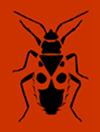柳杉的室内饲养及幼期描述(半翅目:蠓科)
IF 1.2
3区 农林科学
Q2 Agricultural and Biological Sciences
引用次数: 0
摘要
由于柳杉是一种重要的水稻害虫,在其生物生态学和防治方面已有大量文献记载。然而,关于这种害虫的生物学研究很少。本研究开发了一种在实验室条件下(26±2°C;75±3% rh;12L: 12D光周期)及其未成熟阶段。卵发育分为4个阶段,其中S1期发育时间最长(占总发育时间的11.70%);完成S2阶段的90%的蛋都孵化了。若虫可以通过体型、颜色和其他形态特征来区分。未成熟期的总发育期约为50 d, 5个阶段的平均值分别为5.18、4.33、5.28、10.41和8.5 d。利用这种饲养技术,可以实现柳杉的全年饲养,为进一步开展柳杉的生态学、行为学和分子学研究以及田间防治方法的开发提供了便利。*通讯作者;简介蠓科(半翅目:蝉形目:蠓科)是最大的木质吸液昆虫科,在世界温带、热带和亚热带地区有记录的150属约1500种(Carvalho & Webb, 2005;Soulier-Perkins & Kunz, 2012)。大多数尾蚊科的若虫通常被称为吐沫虫,因为它们会产生泡沫(Paladini & Cavichioli, 2015),成虫以各种植物的叶子或茎为食(Vinton et al., 2006)。Abidama属由Distant(1908)为Sphenorhina producta Walker建立,目前包括8种(Zhou & Wu, 1987)。柳杉(Abidama liuensis, Metcalf, 1961)是由Distant(1908)鉴定的水稻和玉米的重要害虫,1988年在中国安徽西南部首次报道。近年来,浙江、福建、贵州、湖北和河南等省也有报道(Zhou & Wu, 1987)。在其在水稻上的几乎整个发育过程中,这种昆虫通过吸茎来摄取必需的营养物质,这可能导致严重的损害(产量减少80%)(Guan & Zuo, 1991)。欧元。[j] .中国生物医学工程学报,2016,33 (2):391 - 391本文章由计算机程序翻译,如有差异,请以英文原文为准。
Laboratory rearing of Abidama liuensis (Hemiptera: Cercopidae) and description of immature stages
Because it is an important pest of rice, Abidama liuensis Metcalf is well documented in terms of its bioecology and control. However, there are few studies on the biology of this pest. In this study, a technique was developed for rearing this insect under laboratory conditions (26 ± 2°C; 75 ± 3% RH; and 12L : 12D photoperiod) and its immature stages are described. Egg development is divided into four stages, of which S1 took the longest time (accounting for 11.70% of total developmental time); 90% of the eggs that completed S2, hatched. Nymphal instars can be distinguished by body size, colour and other morphological features. Total developmental period of immature stages was approximately 50 d, with the averages of the fi ve stadia 5.18, 4.33, 5.28, 10.41 and 8.5 days, respectively. Using this rearing technique, it is possible to rear A. liuensis throughout the year, which will facilitate further ecological, behavioural and molecular studies and the development of ways of controlling this insect in the fi eld. * Corresponding author; e-mail: liangap@ioz.ac.cn INTRODUCTION Cercopidae (Hemiptera: Cicadomorpha: Cercopoidea) is the largest family of xylem-sap sucking insects, with about 1500 described species in 150 genera recorded in the temperate, tropical and subtropical regions of the world (Carvalho & Webb, 2005; Soulier-Perkins & Kunz, 2012). Most nymphs of Cercopidae are commonly known as spittlebugs, due to the foam they produce (Paladini & Cavichioli, 2015) and the adults feed on leaves or stems of a wide variety of plants (Vinton et al., 2006). The genus Abidama, which currently includes eight species (Zhou & Wu, 1987), was established by Distant (1908) for Sphenorhina producta Walker. Abidama liuensis (Metcalf, 1961) that was placed in this genus by Distant (1908) is an important pest of rice and maize, and was fi rst reported in the southwest of Anhui province in China in 1988. In recent years, it has also been reported from Zhejiang, Fujian, Guizhou, Hubei and Henan provinces (Zhou & Wu, 1987). During almost the whole of its development on rice, this insect ingests essential nutrients by sucking the stems, which can result in serious damage (up to 80% reduction in production) (Guan & Zuo, 1991). Eur. J. Entomol. 118: 82–89, 2021 doi: 10.14411/eje.2021.010
求助全文
通过发布文献求助,成功后即可免费获取论文全文。
去求助
来源期刊
CiteScore
2.30
自引率
7.70%
发文量
43
审稿时长
6-12 weeks
期刊介绍:
EJE publishes original articles, reviews and points of view on all aspects of entomology. There are no restrictions on geographic region or taxon (Myriapoda, Chelicerata and terrestrial Crustacea included). Comprehensive studies and comparative/experimental approaches are preferred and the following types of manuscripts will usually be declined:
- Descriptive alpha-taxonomic studies unless the paper is markedly comprehensive/revisional taxonomically or regionally, and/or significantly improves our knowledge of comparative morphology, relationships or biogeography of the higher taxon concerned;
- Other purely or predominantly descriptive or enumerative papers [such as (ultra)structural and functional details, life tables, host records, distributional records and faunistic surveys, compiled checklists, etc.] unless they are exceptionally comprehensive or concern data or taxa of particular entomological (e.g., phylogenetic) interest;
- Papers evaluating the effect of chemicals (including pesticides, plant extracts, attractants or repellents, etc.), irradiation, pathogens, or dealing with other data of predominantly agro-economic impact without general entomological relevance.

 求助内容:
求助内容: 应助结果提醒方式:
应助结果提醒方式:


